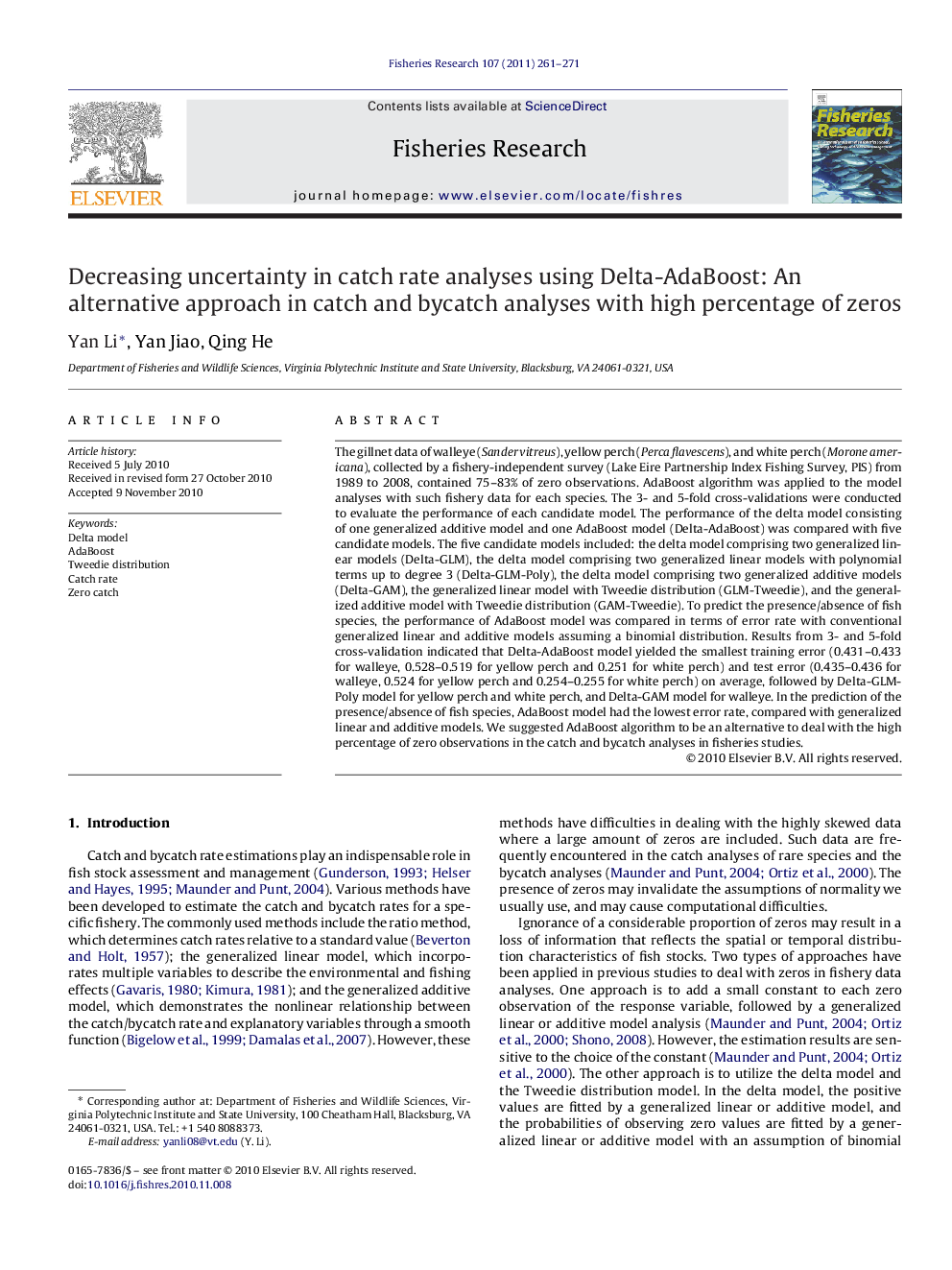| کد مقاله | کد نشریه | سال انتشار | مقاله انگلیسی | نسخه تمام متن |
|---|---|---|---|---|
| 4543851 | 1626848 | 2011 | 11 صفحه PDF | دانلود رایگان |

The gillnet data of walleye (Sander vitreus), yellow perch (Perca flavescens), and white perch (Morone americana), collected by a fishery-independent survey (Lake Eire Partnership Index Fishing Survey, PIS) from 1989 to 2008, contained 75–83% of zero observations. AdaBoost algorithm was applied to the model analyses with such fishery data for each species. The 3- and 5-fold cross-validations were conducted to evaluate the performance of each candidate model. The performance of the delta model consisting of one generalized additive model and one AdaBoost model (Delta-AdaBoost) was compared with five candidate models. The five candidate models included: the delta model comprising two generalized linear models (Delta-GLM), the delta model comprising two generalized linear models with polynomial terms up to degree 3 (Delta-GLM-Poly), the delta model comprising two generalized additive models (Delta-GAM), the generalized linear model with Tweedie distribution (GLM-Tweedie), and the generalized additive model with Tweedie distribution (GAM-Tweedie). To predict the presence/absence of fish species, the performance of AdaBoost model was compared in terms of error rate with conventional generalized linear and additive models assuming a binomial distribution. Results from 3- and 5-fold cross-validation indicated that Delta-AdaBoost model yielded the smallest training error (0.431–0.433 for walleye, 0.528–0.519 for yellow perch and 0.251 for white perch) and test error (0.435–0.436 for walleye, 0.524 for yellow perch and 0.254–0.255 for white perch) on average, followed by Delta-GLM-Poly model for yellow perch and white perch, and Delta-GAM model for walleye. In the prediction of the presence/absence of fish species, AdaBoost model had the lowest error rate, compared with generalized linear and additive models. We suggested AdaBoost algorithm to be an alternative to deal with the high percentage of zero observations in the catch and bycatch analyses in fisheries studies.
Journal: Fisheries Research - Volume 107, Issues 1–3, January 2011, Pages 261–271